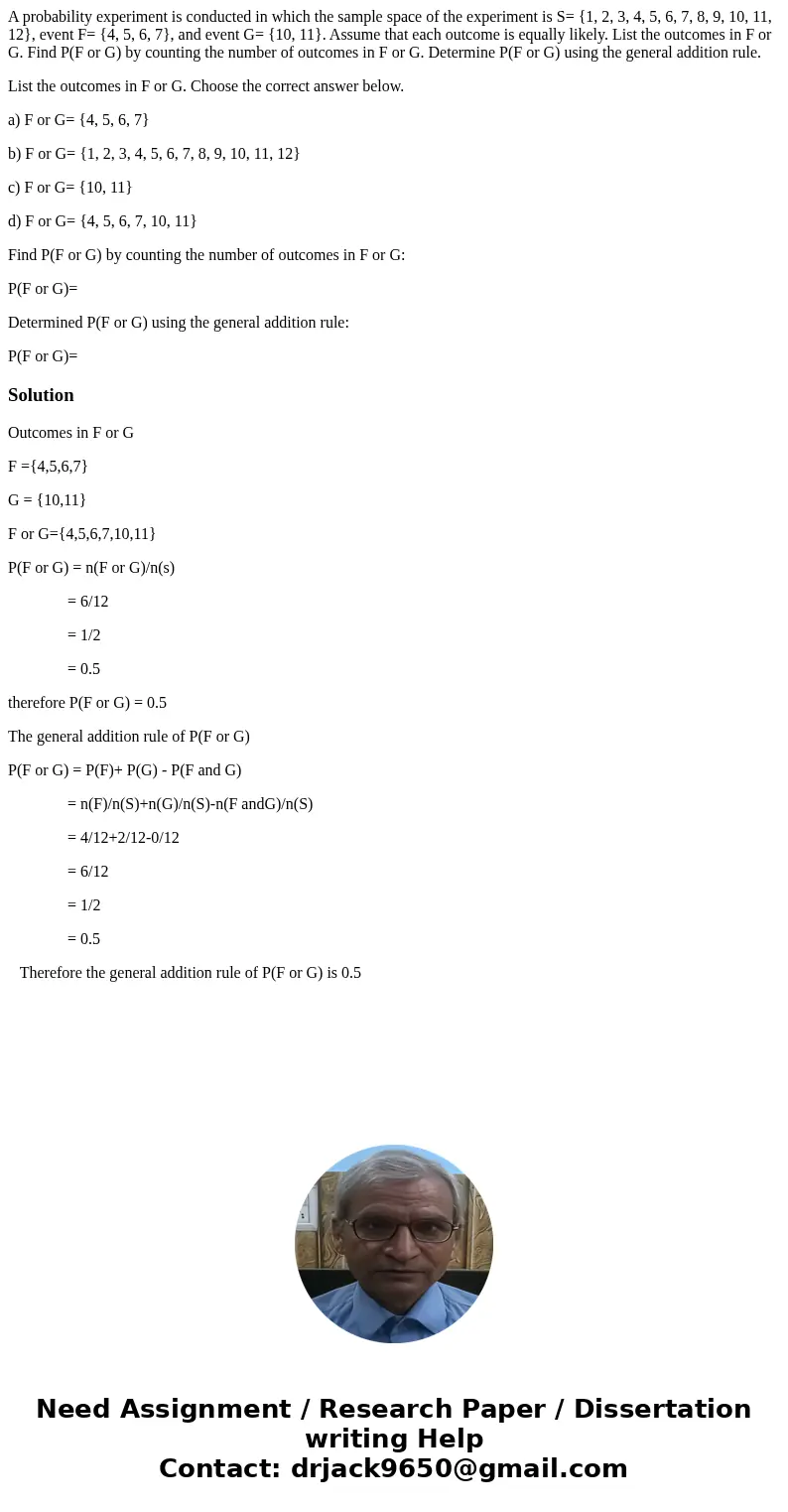A probability experiment is conducted in which the sample sp
A probability experiment is conducted in which the sample space of the experiment is S= {1, 2, 3, 4, 5, 6, 7, 8, 9, 10, 11, 12}, event F= {4, 5, 6, 7}, and event G= {10, 11}. Assume that each outcome is equally likely. List the outcomes in F or G. Find P(F or G) by counting the number of outcomes in F or G. Determine P(F or G) using the general addition rule.
List the outcomes in F or G. Choose the correct answer below.
a) F or G= {4, 5, 6, 7}
b) F or G= {1, 2, 3, 4, 5, 6, 7, 8, 9, 10, 11, 12}
c) F or G= {10, 11}
d) F or G= {4, 5, 6, 7, 10, 11}
Find P(F or G) by counting the number of outcomes in F or G:
P(F or G)=
Determined P(F or G) using the general addition rule:
P(F or G)=
Solution
Outcomes in F or G
F ={4,5,6,7}
G = {10,11}
F or G={4,5,6,7,10,11}
P(F or G) = n(F or G)/n(s)
= 6/12
= 1/2
= 0.5
therefore P(F or G) = 0.5
The general addition rule of P(F or G)
P(F or G) = P(F)+ P(G) - P(F and G)
= n(F)/n(S)+n(G)/n(S)-n(F andG)/n(S)
= 4/12+2/12-0/12
= 6/12
= 1/2
= 0.5
Therefore the general addition rule of P(F or G) is 0.5

 Homework Sourse
Homework Sourse